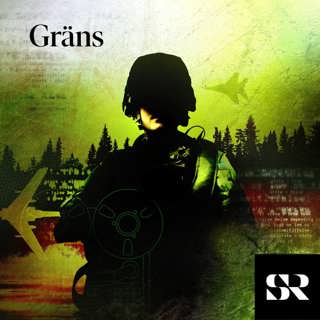
The Confirmation Hearing of Amy Coney Barrett
It was a 12-hour session. Twenty-two senators took turns questioning Judge Amy Coney Barrett on her record and beliefs.Senator Dianne Feinstein, Democrat of California, evoked personal experience of life before Roe v. Wade and asked Judge Barrett whether she would vote to overturn abortion rights.On that question, Judge Barrett demurred — an approach she would take to other contentious issues, including whether she would recuse herself if a presidential election dispute came before the court.With Judge Barrett’s confirmation all but certain, Democratic senators pressed her more with the election in mind than out of any hope of derailing her rise.Adam Liptak, who covers the Supreme Court for The New York Times, gives us a rundown of the second day of the hearings.Guest: Adam Liptak, who covers the Supreme Court for The Times.For more information on today’s episode, visit nytimes.com/thedaily Background reading: In declining to detail her legal views, Judge Barrett said she would not be “a pawn” of President Trump.With the hearing taking place closer to an election than any other Supreme Court confirmation — and with the Senate Republican majority at real risk — the proceeding was riddled with electoral politics.Judge Barrett’s testimony was a deft mix of expertise and evasion. She demonstrated easy familiarity with Supreme Court precedents but said almost nothing about whether they should stand. Subscribe today at nytimes.com/podcasts or on Apple Podcasts and Spotify. You can also subscribe via your favorite podcast app here https://www.nytimes.com/activate-access/audio?source=podcatcher. For more podcasts and narrated articles, download The New York Times app at nytimes.com/app.
14 Okt 202026min

The Politics of Pandemic Relief
In March, Congress pushed through a relief package that preserved the U.S. economy during the pandemic. It felt like government functioning at its best.But now, that money is running out and bipartisanship has given way to an ideological stalemate.While Republicans balk at plans for further significant government spending — even those coming from the White House — Democrats are holding out for more money and a broader package of measures.The absence of a deal could have dire consequences. One economist estimates that without a stimulus package, there could be four million fewer jobs next year.We talk to Jim Tankersley, who covers the economy for The Times, about what’s getting in the way of an agreement.Guest: Jim Tankersley, who covers economic and tax policy for The New York Times.For more information on today’s episode, visit nytimes.com/thedaily Background reading: After posting on Twitter that he was ending talks, President Trump reversed course, raising the stimulus offer to $1.8 trillion. But his own party may reject that plan, handing Democrats fresh leverage.While Democrats hold out for more concessions, deep divisions among Senate Republicans stand in the way of any relief bill. Subscribe today at nytimes.com/podcasts or on Apple Podcasts and Spotify. You can also subscribe via your favorite podcast app here https://www.nytimes.com/activate-access/audio?source=podcatcher. For more podcasts and narrated articles, download The New York Times app at nytimes.com/app.
13 Okt 202029min

Why the Left Is Losing on Abortion
Most Americans say that abortion should be legal with some restrictions, but President Trump’s nominee for the Supreme Court, Amy Coney Barrett, signed a statement in a 2006 newspaper advertisement opposing “abortion on demand.” Her accession would bolster a conservative majority among the justices.How did that happen? According to Ilyse Hogue, president of NARAL Pro-Choice America, abortion rights advocates have for too long taken Roe v. Wade for granted.Ms. Hogue describes how Republican attacks on abortion were not countered forcefully enough. “I think most people in elected positions had been taught for a long time to sort of ‘check the box’ on being what we would call pro-choice and then move on,” she said.Guest: Ilyse Hogue, president of NARAL Pro-Choice America.For more information on today’s episode, visit nytimes.com/thedaily Background reading: The 2006 statement signed by Amy Coney Barrett appears to be the most direct evidence of her personal views, ones she has vowed to set aside on the bench.The issue of abortion contains political risks for both Democrats and Republicans, even as it energizes parts of their bases. Subscribe today at nytimes.com/podcasts or on Apple Podcasts and Spotify. You can also subscribe via your favorite podcast app here https://www.nytimes.com/activate-access/audio?source=podcatcher. For more podcasts and narrated articles, download The New York Times app at nytimes.com/app.
12 Okt 202035min

The Sunday Read: 'David's Ankles'
“We are conditioned to believe that art is safe,” Sam Anderson, a staff writer for The New York Times Magazine, explained in this week’s The Sunday Read. “Destruction happens in a number of ways, for any number of reasons, at any number of speeds — and it will happen, and no amount of reverence will stop it.”Today, Sam explores his personal relationship with Michelangelo's David and the imperfections that could bring down the world’s most “perfect” statue.This story was written by Sam Anderson and recorded by Audm. To hear more audio stories from publishers like The New York Times, download Audm for iPhone or Android. Subscribe today at nytimes.com/podcasts or on Apple Podcasts and Spotify. You can also subscribe via your favorite podcast app here https://www.nytimes.com/activate-access/audio?source=podcatcher. For more podcasts and narrated articles, download The New York Times app at nytimes.com/app.
11 Okt 202054min

The Field: The Battle for Pennsylvania’s White Working Class
This episode contains strong language.Over the summer, Dave Mitchko started a makeshift pro-Trump sign operation from his garage. By his estimate he has handed out around 26,000 signs, put together with the help of his family.Mr. Mitchko might seem like the kind of voter Joseph R. Biden Jr. wants to peel away from the Republicans in November. He had always been a Democrat — he voted for Barack Obama twice — but opted for Donald Trump in 2016.Today, we speak to voters and politicians on the ground in northeastern Pennsylvania, exploring the factors that swung former Democratic strongholds toward Mr. Trump and asking whether Mr. Biden can win them back. Guest: Shane Goldmacher, a national political reporter for The New York Times. For more information on today’s episode, visit nytimes.com/thedaily Background reading: After the turbulent first presidential debate, Mr. Biden embarked on an old-fashioned train tour to cities where the president won over working-class white voters four years ago. Subscribe today at nytimes.com/podcasts or on Apple Podcasts and Spotify. You can also subscribe via your favorite podcast app here https://www.nytimes.com/activate-access/audio?source=podcatcher. For more podcasts and narrated articles, download The New York Times app at nytimes.com/app.
9 Okt 202028min

Plexiglass and Civility: The Vice-Presidential Debate
During most campaigns, the job of the vice-presidential candidates focuses on boosting the person heading the ticket. Proving their suitability for the top job is secondary.But this year is different. The president is 74 and spent much of the past week in the hospital, and his Democratic rival is 77. So it was vital for their running mates, Vice President Mike Pence and Senator Kamala Harris, to show in Wednesday night’s debate that they would be capable of stepping up if necessary.We speak to Alexander Burns, a Times national political correspondent, about the candidates’ strategies and whether anything new emerged four weeks before the election.Guest: Alexander Burns, a national political correspondent for The New York Times.For more information on today’s episode, visit nytimes.com/thedaily Background reading: The back-and-forth between Vice President Mike Pence and Senator Kamala Harris was more civil than the unruly presidential event, but featured sharp exchanges over the coronavirus, China policy, job creation and health care.Here are six takeaways from the night. Subscribe today at nytimes.com/podcasts or on Apple Podcasts and Spotify. You can also subscribe via your favorite podcast app here https://www.nytimes.com/activate-access/audio?source=podcatcher. For more podcasts and narrated articles, download The New York Times app at nytimes.com/app.
8 Okt 202032min

Where Is This Pandemic Headed?
The pandemic has killed more than one million people around the world, at least 210,000 in the United States alone. The illness has infiltrated the White House and infected the president.Today, we offer an update on measures to fight the coronavirus and try to predict the outbreak’s course.Guest: Donald G. McNeil Jr., a science and health reporter for The New York Times.For more information on today’s episode, visit nytimes.com/thedaily Background reading: Fearing a “twindemic” — the onset of both the flu and the coronavirus — health experts are pushing people to get influenza shots.Here’s how to identify the different symptoms of the flu and Covid-19.Donald tells us about his job trying to “cover the future.” Subscribe today at nytimes.com/podcasts or on Apple Podcasts and Spotify. You can also subscribe via your favorite podcast app here https://www.nytimes.com/activate-access/audio?source=podcatcher. For more podcasts and narrated articles, download The New York Times app at nytimes.com/app.
7 Okt 202025min

How a Small Bar Battled to Survive the Coronavirus
This episode contains strong language. Jack Nicas, a technology reporter for The New York Times, moved to Oakland, Calif., five years ago. When he arrived, he set out to find a bar of choice. It quickly became the Hatch.Unpretentious, cheap and relaxed, the Hatch was a successful small business until the coronavirus hit.After the announcement in March that California would order bars and restaurants to shut down, Jack decided to follow the fortunes of the Hatch. Over six months, he charted the struggle to keep the tavern afloat and the hardship suffered by its staff.“I can’t afford to be down in the dumps about it,” Louwenda Kachingwe, the Hatch’s owner, told Jack as he struggled to come up with ideas to keep the bar running during the shutdown. “I have to be proactive, because literally people are depending on it.”Guest: Jack Nicas, a technology reporter for The Times. For more information on today’s episode, visit nytimes.com/thedaily Background reading: Here’s the full story of the Oakland tavern and its staff as they try to weather the fallout from the pandemic. Subscribe today at nytimes.com/podcasts or on Apple Podcasts and Spotify. You can also subscribe via your favorite podcast app here https://www.nytimes.com/activate-access/audio?source=podcatcher. For more podcasts and narrated articles, download The New York Times app at nytimes.com/app.
6 Okt 202044min






















